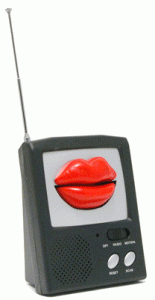The Media Trainers®
Back in the 70s, FM radio’s purer signal quality started Shanghai’ng listeners from AM radio with what has become a variety of niche music formats. Today, FM commands about 80% of the radio audience. Now, once again, some 30+ years later, it appears that FM again is postured to hijack the preeminent AM format, talk, and, as a result, much of the AM audience. The reason is strictly one of economics, based on a bill that will require music stations to pay record labels out of station revenues. This prediction of coming trends on FM is made by the publisher of Radio Ink, Eric Rhoads. Here is what he has written:
Is This The Breakout Year For FM Talk? Pioneers are the people with arrows in their backs. Talk radio pioneer Walter Sabo told me more than 15 years ago that FM talk would become a hot format, but it was a tough sell. He suffered a lot of criticism and resistance because companies that owned big talk stations didn’t want to cannibalize their successful AMs. After all, AM had been dead for years until it was born again with talk radio. Sabo’s vision from back then has yet to come to full fruition — but it may be just around the corner. Here’s why:
There is a 50-50 chance radio will lose the performance fee issue this year or next and will have to pay some percentage of revenues to record labels. With the current state of radio, taking dollars off the top line may be economically impractical, especially if the rates are as far out of line as some anticipate. Music radio could become a shadow of its former self, and we may see a proliferation of FM-based talk formats. Though there will likely be multiple traditional talk outlets doing politics, I believe a new breed of FM talkers will succeed by offering variations on talk lifestyle formats with younger demographic targets.
Because many believe they see this coming, there will be companies, perhaps those with less successful music stations, that will want to establish a beachhead now, before everyone comes to the realization that music formats will be less profitable.
The generation that grew up with music on FM is now favoring talk programming, and the generation behind them is entering the age when talk becomes more interesting. Younger, hipper FM-talk presentations like “real radio” and new variations for younger audiences will be embraced in every market. And with PPM results showing how much listenership National Public Radio is taking, it’s clear that a large chunk of all listening is talk-based. Commercial radio will begin to engage strategies to take those audiences away from NPR.
According to BIA, in 16 of the 20 top U.S. radio markets, lower-ranked AM talk formats generated more revenue than higher-ranked FM music formats. Meanwhile, Arbitron says the combined spoken-word formats — news, talk, sports — add up to the most most-listened-to format in the country, comprising 17.5 percent of radio listening.
But 80 percent of all radio listening takes place on FM. So imagine what could happen to talk stations on FM. If the total of all the talk in your market is a combined 10 share or less, there is an average of seven points to be gained by an FM talker.
Of course, the talk format has more available inventory before it’s not considered annoying. Music stations may find they need to reduce inventory in order to compete. And in almost all markets where an FM talker competes with an AM talker, the FM is outperforming the AM. Typically, there are multiple choices for similar music formats, which further dilutes opportunity. But FM talk takes over in most of its markets rapidly, often within one or two rating periods.
For those of you who fear that putting on an FM talk station could cannibalize your AM talker, the evidence is to the contrary, especially if you’re doing a talk format designed for FM. For instance, when Walter Sabo launched
WTKS in Orlando, it took no audience from traditional AM talker WDBO and shared no cume (listeners sampling the stations). Most of its cume is shared with the alternative rocker in the market and with WOCL and, formerly, with WMMO. The same held true at NJ 101.5, which shared audience with classic rocker WAXQ-FM.If I were a betting man, I’d bet that spoken word, which saved AM radio, may in fact be the format that soars on FM in every market. New iterations of talk will emerge as this soon-to-occur phenomenon takes radio by storm. Can you say “opportunity”?
For more information on Eric Rhoads and his radio trade publication, click on: http://www.radioink.com/




